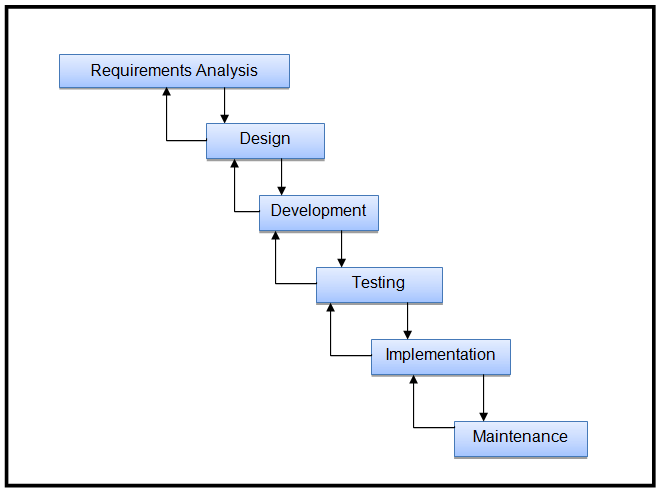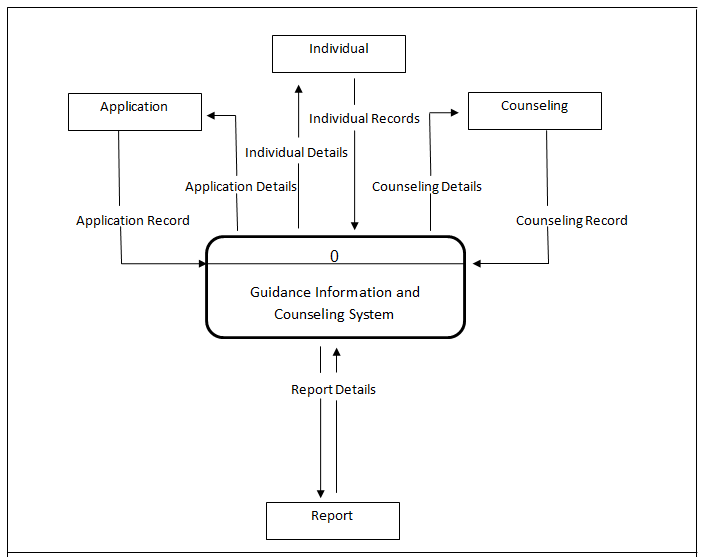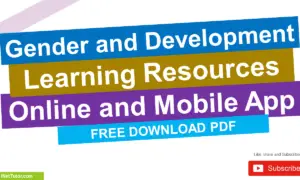Guidance Information and Counseling System Methodology
This article presents requirements analysis, requirements documentation, and design of software, system, product, and/or process, development and testing, description of prototype.
The researchers used Modified Waterfall Model that includes requirements analysis, design, development, testing, implementation and maintenance.

Figure 1. Modified Waterfall Approach of Guidance Information and Counseling System
Requirements Analysis
In this phase, we gather all the possible requirements within the area where the study was conducted and it serve as the basis for the development of our proposed system.
The researchers conducted a feasibility study using interview and survey questionnaire in the existing system of the guidance office that has been checked and validated. According to the result, the audibility, accuracy and security of their current system were poor. Base on the result that the researchers gathered during the feasibility study, we come up to develop a system that can solve the problem of the end user.
Design of Software with Process
The researchers created a design on the result of the requirements procedure to be develop.

Figure 2. Decomposition of Guidance Information and Counseling System
This phase where discussed about the series of design that is created and reconsider for the finalization of system design from the different forms, interfaces, the input and output and the data flow of the system was designed from the Decomposition, DFD and ERD.

In this figure shows the operation of the proposed system, to have an access with the system the user/administrator must log in first. There are four main operations in the system, Application, Individual, Counseling and the Reports. Every operation has its own function that automatically saves to the database of the system.
Coding
In this phase, it is creating different codes to create a system that is executable and has full functionality that will meet the client’s need. It is carried out based on the system design and the program is created based on the proposed system.
Development and Testing
In this phase it is where testing and development of the system was involved such as Hardware, Software, People ware Requirements, in which the system will be evaluated by the IT Expert for the initial test and the respondents/user of the system for the user acceptance/final test.
Hardware Requirements
CPU
- Pentium® Dual-Core
- E5800 @ 3.20GHz
Monitor
- Plug and Play Monitor on Intel® G41 Express Chipset
- LG Flatron W1943TE-PF
PS/2 Mouse
- Microsoft PS/2 Mouse
PS/2 Keyboard
- Standard 101/102-Key or Microsoft Natural PS/2 Keyboard
Printer
- Canon LBP2900
Software Requirements
Development Tools
Visual Basic 6
- Is a programming language that allows the developer to drag and drop object into the program as well as manually written program code.
MS Access
- Is a relational database management system that combines relational Microsoft Jet Database Engine with a graphical user interface and software-development tools.
Implementation Tools
Windows 7, 8, 10
- Operating System mostly used for its stable and durable environment in supporting software applications.
Visual Basic Runtime
People Ware Requirements
Software Developers
- Project Manager – Monitor and supervise the development of the entire system.
- Programmer – Create the source code and develop the system.
- Researcher – Research the content of the study.
Recommended Users
- System Administrator – Maintain, manage and backup the system.
Initial Testing
In this phase is the evaluation of Guidance Information and Counseling System. The develop system and the tools that we used was the McCall’s Software Quality Model. It was validated by two (2) IT experts and one English Teacher and evaluated by three (3) IT Experts, so that the developers of the system will know what possible errors to be change in regard with the suggestions of the experts.
The testing measure use by the researcher was the scale of 1-5 where in 5-Excellent, 4-Very Satisfactory, 3-Satisfactory, 2-Good and 1-Poor. After the system was evaluated, the tabulation of the Software Evaluation result has an overall mean 3.92, and showed that the system was Very Satisfactory.
Final Testing
The final testing of the system was conducted after the initial test was done. The researcher sent a letter to the respondents attached with a questionnaire which is User-Acceptance Form in which it was validated and evaluated by the experts, where the user test the functionality and effectiveness of the developed system. The respondents of the system were the Guidance Counselor and staff of the Guidance center.
Implementation Plan
The proposed Guidance Information and Counseling System will be implemented to Guidance Office to aid the office services and easy for the user to store, update and view the data of the student’s and the statistical report every year that supported by DSS.
Implementation Result
Based on the initial and final testing we got an overall mean of 4.34 which means Very Satisfactory and 4.6 Excellent.
The result of the implementation, Guidance Information and Counseling System proved that the system is effective and reliable to meet the user needs. With this, the researchers believed that the developed system is badly needed to the Guidance Center.
Credits to the authors of the project.
You may visit our facebook page for more information, inquiries and comments.
Hire our team to do the project.


